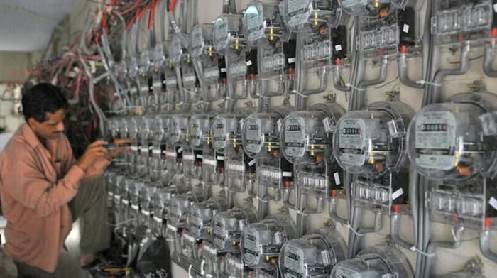ISLAMABAD: With over Rs400 billion in government claims and Rs210bn in counterclaims from K-Electric, the Economic Coordination Committee (ECC) of the Cabinet approved a roadmap for settling long-standing issues with Karachi-based integrated private utility, including additional power supply from the national grid, 10-year future generation commitments by KE, and financial settlements through mediation.
The single-point meeting of the ECC, presided over by Caretaker Finance Minister Dr Shamshad Akhtar, allowed the signing of a power purchase agency agreement (PPAA), interconnection agreement (ICA), tariff differential subsidy agreement (TDA) and mediation agreement as recommended in July by a special task force led by former prime minister Shahid Khaqan Abbasi.
According to a senior power official, drafts of all these agreements have already been “initialled” including PPAA along with a master collection account between KE and Central Power Purchasing Agency, ICA between KE and NTDC, TDA between the KE and Power Division to guarantee government subsidies, and a mediation agreement among all of the above and SSGC for settlement of historic payables and receivables.
“After detailed discussion and deliberation, ECC decided to approve the proposal of Power Division for signing of the draft PPAA, ICA, TDA and mediation agreements between K-Electric and GoP Entities,” said an official announcement after the meeting, adding that the committee “also directed Power Division to present the matter related to KE’s generation enhancement plan to the Cabinet Committee on Energy (CCoE), which should focus on reducing the cost of electricity as well as on the resultant subsidies”.
Approves draft agreements for signing with Karachi-based utility
Key takeaways from the series of agreements include the supply of a total of 1,000MW from the national grid to KE for the next 10 years on a firm basis and an additional 100MW on an as-and-when-available basis.
This would be covered in the PPAA between KE and government entities, including the Power Division, replacing the past power purchase agreement for 650MW that expired in 2015. Since then, the power supply has continued up to 1,100mw without legal cover.
KE would add a baseload capacity of 3,000MW over the next 10 years in independent power producer (IPP) mode. This would include both new equity-based projects and the upgradation and conversion of old plants.
Under the same PPAA, which would also legalise the power supply of the last nine years, one unit of the government-owned Jamshoro power plant would immediately supply electricity to KE on imported coal, later converting to local coal.
Another unit of the same plant would subsequently supply power to KE, with the financing mode yet to be decided — either by KE as the lead financier or by the federal government in IPP mode.
The Power Division concedes that this (Jamshoro) transaction has substantial financial implications for the government but deems it beneficial in the long term for foreign exchange savings.
Under the ICA, KE would be responsible for investing in interconnection facilities to ensure seamless power off-take from the national grid under its seven-year investment plan already submitted to the power regulator, both in terms of 1,100mw and additional Jamshoro plant-related.
The government would ensure proper budgeting and timely payment of tariff differential subsidy, including late payment surcharge, for uniformity of national rates.
Quarterly and monthly tariff adjustments have already been synchronised with federal distribution companies to avoid the addition of circular debt, which now stands above Rs2.6 trillion. AGPR would ensure a timely audit of TDS and late payment surcharge.







